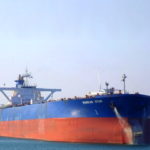Source: Intermodal According to Intermodal’s Head of Research Department, Mr. Yiannis Parganas, “focusing first on the bulk carrier sector, newbuilding contracts in Q1 2025 were limited to just 16 vessels. These include 2 Newcastlemax, 6 Capesize, 5 Kamsarmax, 2 Ultramax, and 3 Handysize vessels, amounting to a combined total of 1.
62 million dwt. As noted, this represents the lowest level of newbuilding activity ever recorded for a first quarter, and the second lowest of any quarter historically. When compared to previous years, the contrast is particularly stark.

In Q1 2024, 173 bulk carrier orders were placed, totaling 13.9 million dwt. Similarly, the corresponding figures for Q1 2023, 2022, and 2021 stood at 9.
8 million, 10.7 mil-lion, and 13.4 million dwt respectively”.
Mr. Parganas added that “turning to the tanker sector, a total of 43 vessels were ordered in the first quarter of 2025. This includes nine shuttle tankers com-missioned by Tsakos Energy Navigation.
Excluding these, the breakdown comprises 2 LR2, 2 Aframax, 2 Panamax, 8 MR2, and 20 Handysize chemical tankers, bringing the total to 2.84 million dwt—or 1.42 million dwt excluding the shuttle tankers.
While this is not a record low, as previous troughs were observed in 2021, 2022, 2016, and 2009, there is nonetheless a noticeable down-ward trend compared to more recent years. In Q1 2024, 186 tankers were ordered, totaling 20.0 million dwt.
Notably, Q1 2024 also included 28 VLCC and 21 Suezmax orders, both entirely ab-sent in Q1 2025. For further context, Q1 2023 saw 92 tanker orders totaling 6.4 million dwt”.
Source: Intermodal “These low levels of newbuilding activity can be attributed to a confluence of market and regulatory factors. Weak freight rates, particularly in the dry bulk segment, have diminished the incentive for fleet renewal, as many owners prioritize liquidity and operational efficiency over long-term investment. At the same time, newbuilding prices remain elevated.
Adding to this pressure, un-certainty surrounding future environmental regulations and propulsion technologies particularly in light of the IMO’s decarbonization targets has led to increased hesitancy among shipowners. Furthermore, shipyards are operating near full capacity, pushing delivery slots well into 2027 and beyond, which further disincentivizes ordering in the near term. Geopolitical developments, including rising trade tensions and proposed U.
S. tariffs on Chinese-built vessels, have also injected an additional layer of risk into newbuilding strategies, encouraging a more cautious stance across the industry”, Intermodal’s analyst concluded. Nikos Roussanoglou, Hellenic Shipping News Worldwide.
Entertainment

Shipping Fleet Renewal Takes a Back Seat For the Time Being

Ship owners have taken a step back from placing more newbuilding orders, attempting to assess the current market conditions, ahead of expected turbulence. In its latest weekly report, shipbroker Intermodal said that “as the first quarter of the year concludes, it is insightful to examine the dynamics of newbuilding activity in the two main conventional ...














